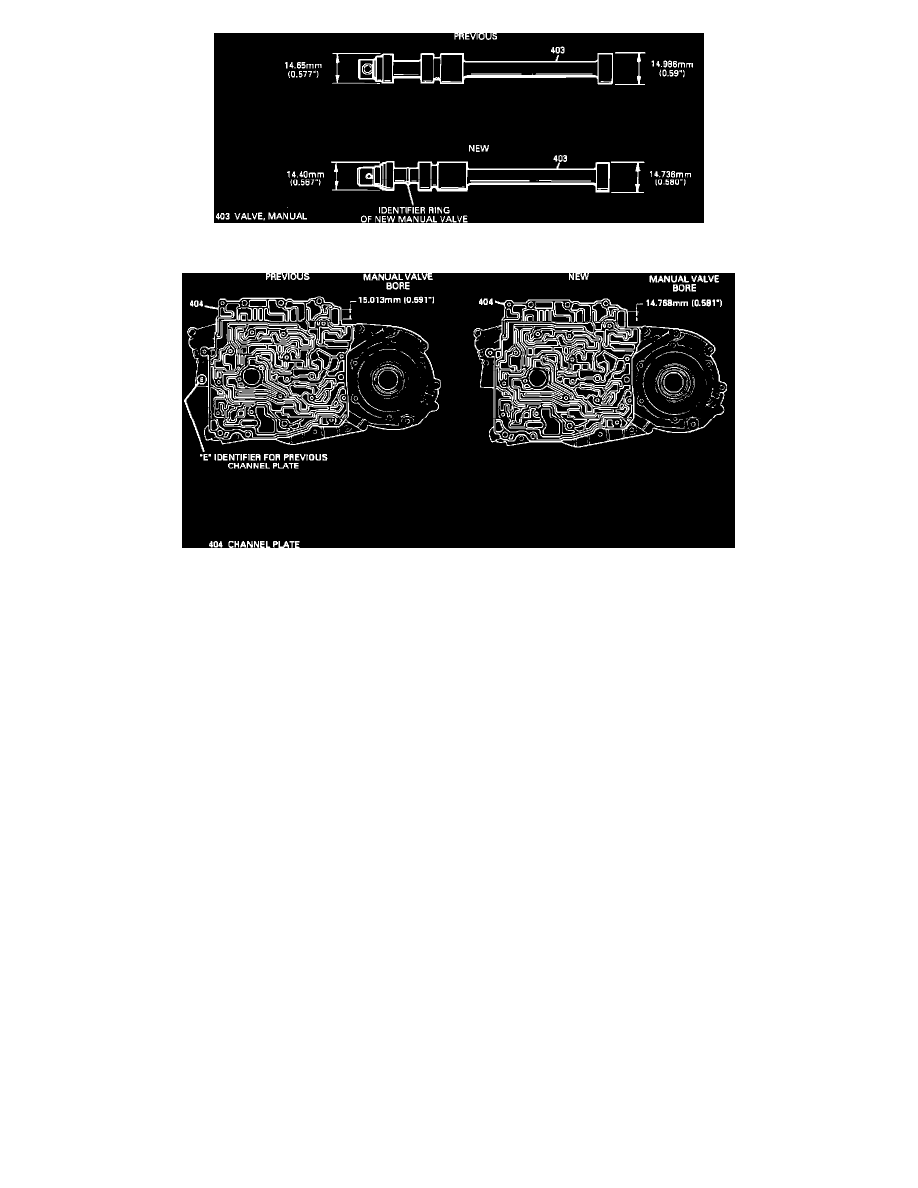LeSabre V6-231 3.8L VIN C SFI (1990)

Figure 3 - Manual Valve
Figure 4 - Service Channel Plate
BULLETIN COVERS: (Figures 1 through 4)
New channel plate assembly, inside detent lever and manual valve service packages for distressed 4th clutch.
IMPORTANT:
4th Clutch distress may be caused by the manual valve being positioned between the neutral and D4 position. This allows the input
clutch to be applied in 4th gear. The input clutch will try to drive the input sun gear while the 4th clutch is trying to hold the sun gear.
A mispositioned manual shaft may be caused by excessive drag or friction in the range selection system. Contributors to excessive
drag include an improperly routed or binding shift cable and interference between the column and dashboard contact surfaces. This
excessive drag condition may also contribute to a misadjusted shift cable during setting. Also, a mispositioned shift indicator needle
may cause an owner to "line-up" the needle in the D4 or 0D position and not allow the manual valve to fully position in the D4 or 0D
range. Or an owner that rests his/her hand on the shifter of a console shift model may also be inadvertently pushing the shifter toward
the neutral position.
IMPORTANT:
Possible early signs of 4th clutch distress include a leak from the left axle seal (channel plate side) and/or side cover to channel plate
gasket. The six side cover to channel plate gasket nuts may also have no torque. The heat generated from the 4th clutch slipping when
applied would cause the axle seal and garter spring to expand, causing a leak, and also damage the gasket, leaving the nuts loose.
Other possible early signs may include shudder in 1st gear, slips in all gears and burned transaxle fluid.
A distressed 4th clutch vehicle may not move in drive and reverse. This is due to the 4th clutch assernbly being melted or friction welded to the channel
plate. This may lock the 4th clutch hub to the channel plate, causing a tie-up condition when the input clutch is applied. The input clutch is applied in
Park, Reverse, Neutral and Drive ranges at 0 MPH. The vehicle can be pushed with the engine off (when not in park) but when the engine is started, the
vehicle will not move.
For the new service packages, the following parts were modified:
-
New inside detent lever (704) will have the manual link hole location changed for a different "throw" of the manual valve. The previous and new
inside detent lever are not interchangeable even though the parts will physically assemble. The new inside detent lever must be used with the new
manual valve and channel plate. The previous inside detent lever must be used with the previous manual valve and channel plate. The identifier for
the new "W" car inside detent lever is an added square hole. The previous "W" car inside detent lever is gold in color. Some of the early new "W"
car inside detent levers may be gold in color and have the added square hole. The gold color will be discontinued and the square hole will be the
only identifier for the new "W" car inside detent lever. The previous inside detent lever will still be available for models that just need replacement
of the lever for 1987 and prior model years.
